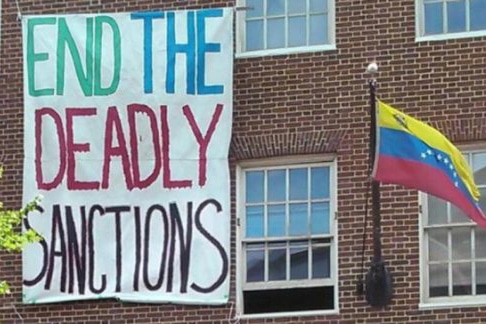The Bedrock Upholding the US Self-Correction Myth Has Collapsed
Can the much-touted resilience of the “self-correcting” U.S. system still live up to its reputation? Indeed, over the past century, the U.S. crossed a minefield of domestic and foreign challenges, such as the Great Depression, the Civil Rights Movement, the Vietnam War and the Cold War. In the end, economic crises, social turmoil and political confrontation were overcome. It was during World War II that the U.S. transformed itself from a great power into a superpower. In the 1980s, the Reagan Revolution restored the economy, now completely free of the costs of the Vietnam War quagmire. The half-century Cold War clash between systems saw the U.S. emerge victorious. These events have been stitched together into a narrative about the unique advantages of the U.S. system. The narrative has garnered recognition across the globe, and even many foreign observers do not believe the U.S. is currently in a state of political decay; despite the intensifying domestic political antagonism of recent years, the self-correction mechanisms are expected to tide the country over yet again.
This “self-correction” refers to the ability of institutions to correct previous errors and enact institutional reform. Is this unique to the U.S.? Obviously not. All countries that survive over an extended period will encounter crises and commonly enact self-correction in response. However, the U.S. considers its self-correction exceptional, with heralded key differences due to the U.S. constitutional system, democracy, the rule of law and the mechanism of checks and balances. The achievements of the “superior U.S. system” are regarded as difficult for other countries to match.
Therefore, there are political goals behind this linguistic framing; it can stimulate American pride and is nationally unifying. The theory that the U.S. has strong self-corrective capabilities was a retroactively established myth to maintain global supremacy. This was a myth with little grounding in reality. For example, why didn't the U.S. apply its “superior U.S. system" in the 1860s to prevent the brutal Civil War?
The previous ability of the system to correct errors had two important preconditions: First, since the founding of the republic until the beginning of this century, the political system, characterized by a blend of elite republicanism and the wisdom of an electoral democracy, was dominated by white immigrants from Europe and their descendants. Also, the mainstream culture was Anglo-Saxon. The U.S. had not yet truly experienced the challenges of mixed cultures, religions and racial composition. Second, since the late 19th century, the U.S. had been the world’s largest industrialized country. Industrialization helped resolve unemployment and the bountiful wealth created allowed for the implementation of an extensive welfare system, which resolves conflicts of interest between different groups. This new social contract won the citizenry’s dedicated support. Universal suffrage, President Franklin Roosevelt’s New Deal and President Lyndon Johnson’s Great Society were all able to be realized because of the surplus generated by industrialization. Redistribution of the new wealth temporarily resolved sharp political antagonism.
A predominantly white population with a predominantly Protestant faith and culture ensured that the “Americans” of the past were, broadly speaking, an emotional community. The division of wealth generated by industrialization by these "Americans" was among a community of interests. Only with an emotional connection and common interests were the “Americans” able to form a political community. This was the bedrock upon which the U.S. was able to successfully engage in error correction and institutional repair, but that bedrock has now collapsed.
In his farewell address George Washington said, “Citizens by birth or choice, of a common country, that country has a right to concentrate your affections.” The problem now is that the many among the new multitudes coming today do not even meet the basic standards of learning English and integrating into the mainstream culture. The sense of commonality between those coming in and traditional “Americans” is increasingly faint.
The demographic structure has undergone tremendous changes since the turn of the century. The latest census data show that although traditional whites still account for about 70% of Americans over the age of 55, they only account for half of Americans ages 18 to 34. Among minors, whites are already below 50%. More crucially, the proportion of Protestants among the immigrants and the new demographics is decreasing, while the proportion of other faiths and non-English speaking population is ever increasing. The changes in the demographic structure and cultural beliefs have ruptured the system that was established when the U.S. first formed a political community. These anxieties are exactly what the late American political scientist Samuel Huntington wrote in his “Who Are We? The Challenges to America's National Identity.”
Furthermore, since the late 20th century, with the development of the global economy, the U.S. has gradually lost its previous spectacular economic and technological dominance. There are two features of the U.S. that are corrosive to society and economy: It is both no longer the world's largest industrialized country and now it is the world’s largest virtual economy. These two features also make it difficult to retain global hegemony. As economic inequality in the U.S. increases and different classes and regions are further disassociated, there is no longer a citizenry sharing in benefits generated by a common nation. With common sentiment weakened, national identity and domestic governance face major challenges. Under the new conditions it is more difficult for the U.S. system to once again find a resolution through its “self-correction.”
The author is a professor at the School of International Relations and Public Affairs, Shanghai International Studies University

